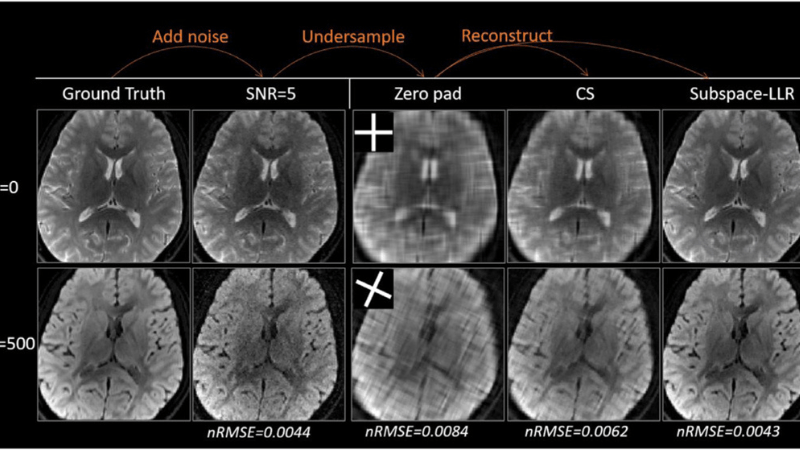At IU School of Medicine, the Wu Lab continues to develop robust, fast, and super-resolution hybrid-diffusion imaging (HYDI) for studying the cortical gray matter and functionally distinct subfields of the deep-brain gray matter (e.g., the amygdala subfields and hippocampal subfields). Diffusion MRI on gray matter is not always straightforward. The major challenges are coarse imaging resolution, which causes signal contamination from cerebrospinal fluid and white matter; in cases of high spatial resolution, the image quality may suffer from a low signal-to-noise ratio. With respect to the cerebral cortical thickness of 1 to 4 mm, the current standard diffusion MRI studies with a modest resolution (isotropic voxel size of 2x2x2 = 8 mm3) suffer severe partial volume contamination from the surrounding tissues. We have developed an approach called RoSA (Rotating single-shot acquisition, Wen et al., Magnetic Resonance in Medicine 2018) to achieve a four-times-higher resolution (1x1x2 = 2 mm3) for diffusion MRI. We also use the CMRR multiband approach to achieve 1.25 mm isotropic resolution (1.25x1.25x1.25 = 2 mm3) for our routine HYDI scans. Building on the 1.25 mm acquisition resolution, we employed a Collaborative and Locally Adaptive Super-Resolution (CLASR) approach, which converts the redundancy information across multiple volumes of diffusion images to spatial resolution. The CLASR approach further brought the HYDI to a submillimeter super-resolution level (0.625 x 0.625 x 0.625 = 0.25 mm3) and enabled tractography within the hippocampal subfields (Elsaid et al., Neuroradiology 2022). The pursuit of high-resolution diffusion imaging was supported by multiple internal pilot funding and an external industrial contract.
